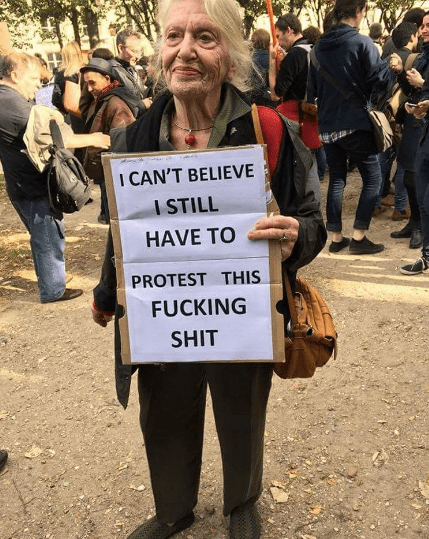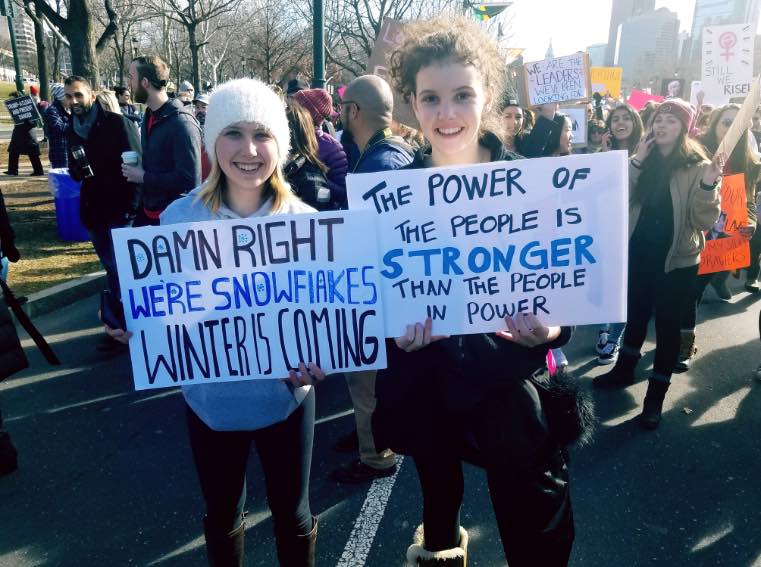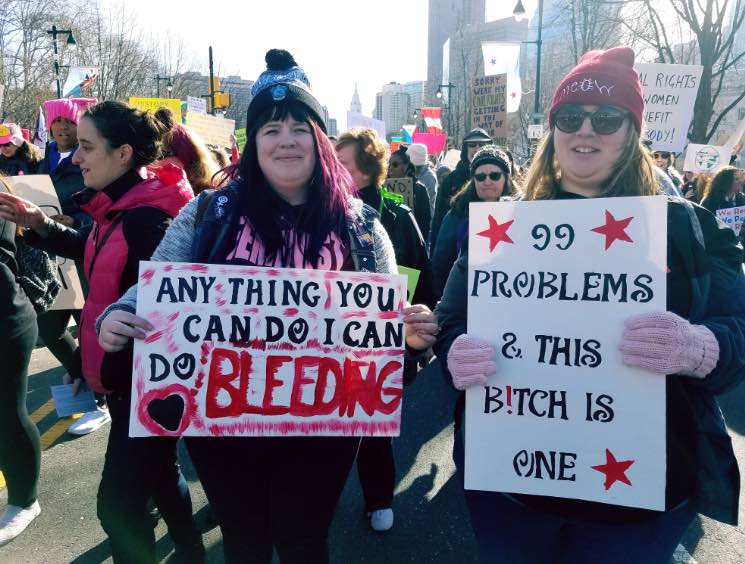Horror and sci-fi have always been ways for society to talk things that society can’t talk about
From Invasion of the Body Snatchers in the 50s (fears of lurking commies next door) to the first televised interracial kiss (Capt, Kirk and Uhura on Star Trek) to Gen-X feeling suffocated by Reagan-era complacency (Nightmare on Elm Street, They Live) to the current re-imagining of Halloween about the effects of inter generational trauma — pop culture throws allegories at us that tell us what we’re thinking about in that place we don’t want to acknowledge exists.
I was struck today by a re-assessment of the decade-old horror movie Jennifer’s Body, and how the entire story around the film resonates in a different way, given recent events.

The marketing department did what marketing departments do, and melded sex with danger.
The movie is being re-examined by reviewers all over the web right now, possibly because it’s in heavy rotation on HBO right now. Why?
Well, the “origin story” of the movie – that is, how the monster becomes a monster read some wood differently in light of current events. Here is a nut graph from the VICE review
The attack on Jennifer is one of the film’s most powerful and uncomfortable scenes. There’s no sexual assault, but the imagery is clear. Even if it wasn’t, Jennifer meekly asks the members of Low Shoulder if they’re rapists once she notices something isn’t right in their tour van. What follows is the sacrifice of Jennifer by a group of men who are casual and practiced, cracking jokes and singing songs as Jennifer cries and begs for mercy. It’s chilling and should stand out to anyone watching what has otherwise been a darkly funny movie so far. If Ebert’s reading is the norm, no wonder Jennifer’s Body barely registered.
The story is a twist on monster movies, in that the pretty, vulnerable cheerleader becomes the dark, unstoppable force.
… teen girls everywhere in America were told earlier this month by their president and elected senators that whatever their male peers do to them in their youth doesn’t really matter.

For once, the pretty girl is covered with someone else’s gore. Which really made the guys in their letter jackets out on dates squirm uncomfortably in their seats.
It takes something really shocking and in-your-face to knock current American cultural dialogue out of its comfortable ideological trenches – the debates over hot-button issues like abortion, immigration, violent video games, rust-belt jobs disappearing, etc. etc. – have all descended into “hot takes” that mostly serve to confirm the tribal identification of the people yelling past each other in comment threads on Facebook.Â
This is the function of good art.Â
Here’s Vox’ take:Â
Watching that moment in 2018 brings up unavoidable echoes of Christine Blasey Ford’s testimony about Brett Kavanaugh’s alleged assault on her when she was a teenager, of the phrase “Indelible in the hippocampus is the laughter.†Jennifer’s pain is funny to these men. For them, it’s a lark. But for her, it’s a moment of trauma that is going to change her forever.
What Jennifer’s Body offers up in response to the trauma and tragedy of what happened to Jennifer in the van is the cathartic fantasy of what happens next, of Jennifer turning her trauma against her attackers, of her using her victimized, violated body to wreak bloody vengeance on the patriarchy.
And lo, suddenly Jennifer’s Body is not a sex fantasy — it’s a revenge fantasy.
The past two years have seen the uncorking of decades of rage from women across the age spectrum, from older “First Wave Feminists” who carry signs saying “I can’t believe I have to come out to protest this shit again…”Â

… to Gen-Z women suddenly realizing that a lot of things that they really didn’t ever question are now suddenly on the table, and realizing that they have been trained since first logging onto the internet (what a phrase that is these days) that they have been trained to connect, organize, and craft compelling memes that reference pop-culture touchstones.Â

And here’s where I get to the point of this essay: in looking at the photos of the protest marches, the speeches, the demonstrations, something jumped out at me. It wasn’t just the blend of all age groups – although if you look at the faces of the women in just the two photos above, you can see that there are multiple generations at work here.Â
No, what’s new to me is the memetic media loop that is being adopted and slyly subverted. Much as Jennifer’s Body subverts the expectations of straight male horror movies, the signs and chants of the women in these marches has a different tone to it these days. Check this out:Â

These are not the flowers and peace signs of the Summer of Love hippie chicks, nor are they the “Riot Grrl” movement that so focused on establishing identity that it fragmented into warring factions, and is mostly remembered these days as a musical style aimed at liberating white middle class punk girls from mean guys in the mosh pit.Â
To me, the inclusion of familiar pop culture references, like the Game of Thrones shout-out in the “Winter is Coming” sign, to the Jay-Z song and the self-identification as a “b!tch”, tells me that this younger generation “gets” media attention and provocation at a level that is only possible for people utterly marinated in media every waking second.Â
It’s long been remarked that there are very few things that knit our fractious society together any more (which is why advertisers still pay insane premiums for Super Bowl spots). Those few things that do – hit TV shows, songs that everyone can sing along with, movies that become cultural touchstones – are now part of our political protest movements.Â
They are part of how we have conversations with ourselves at a time in which the mere mention of a political subject sends everyone scurrying, or eye-rolling, or shouting in hair-trigger reaction. This kind of cultural appropriate is going to have to carry a lot of weight in the years to come, as we work our way out of our national nervous breakdown.Â
It’s asking a lot of the scriptwriters, video-game engineers, music producers and graphic artists to supply us all with the ammunition to fight our way out of this dead-end; to give us the powerful images and sounds we’re going to need to agree that Mean Something.Â
Parables by their nature aren’t about the thing that they’re about. If we’re forced to only have indirect discussions about the friction points in our cultures, it’s going to be a while before we can circle our way around to having a more direct discussion of what’s really at stake.Â
Of course, by that point, Gen-AA (what else comes after Gen-Z? Do we call them the “Battery Generation”?) will probably have come up with a really kicky virtual reality meme to mock us all.Â

